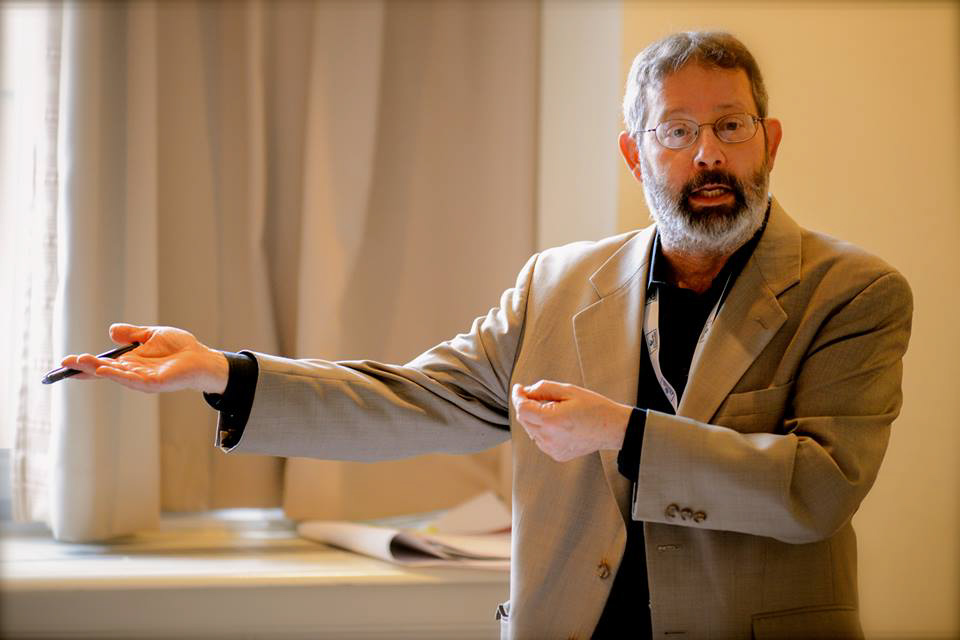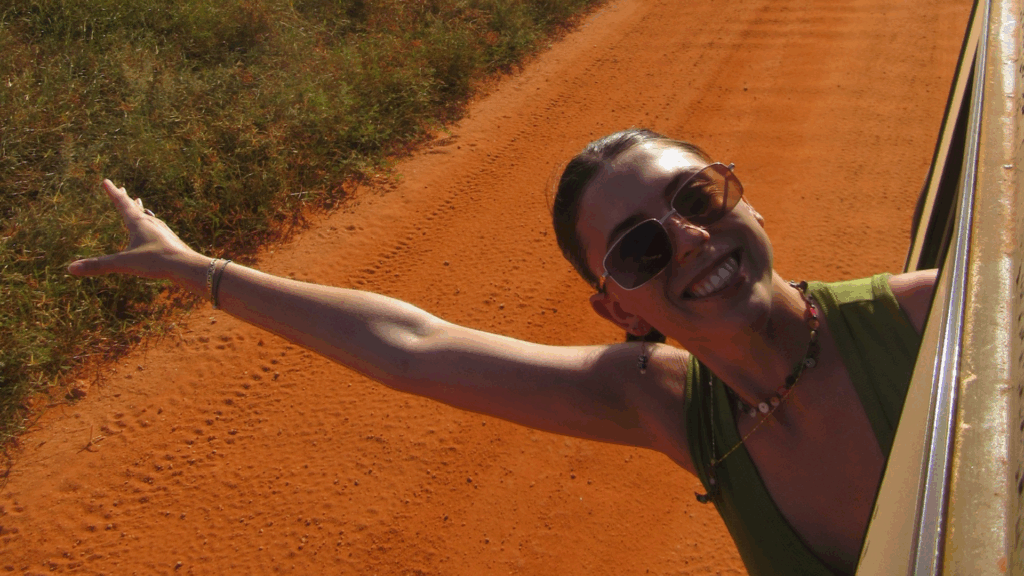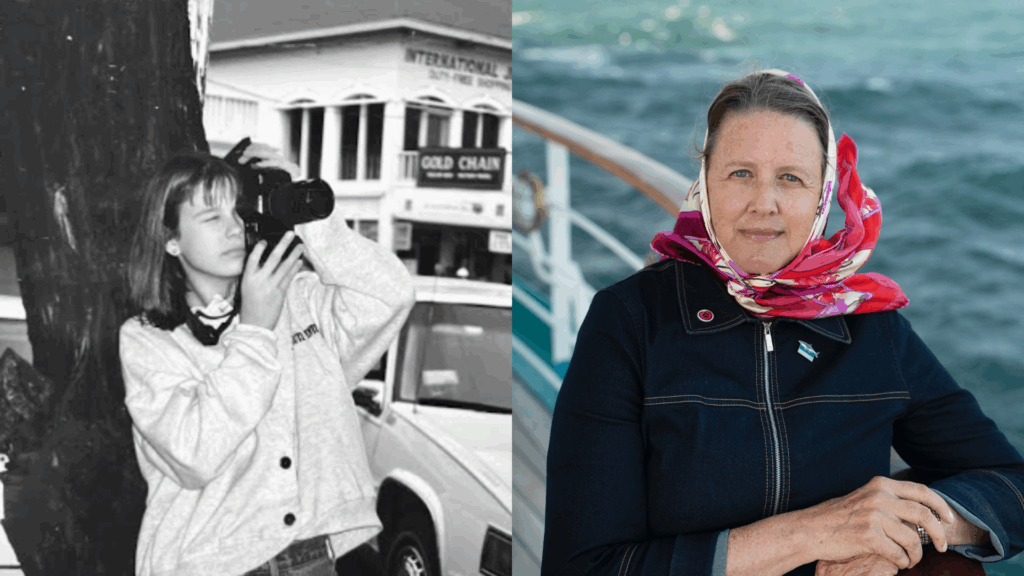Written by: Nina Russell (Student)
“I know what I want to do with my life now,” smiles a friend after the Semester at Sea US Embassy Homestay trip to Sofia. “This trip changed my life.” After two full days and nights with US diplomats in Bulgaria’s capital, we are empowered and excited. Along with other students from the trip, I feel that Bulgaria is my favorite stop, the most life-changing one, and the country to which I am most eager to return.
I applied in the spring for one of ten student spots on the trip. An anonymous donor made it affordable for each of the students to go on the trip. All incoming SAS students received an email inviting them to apply, soon after Bulgaria replaced Egypt on our itinerary for this summer. The application included a resume and a 500-word statement of intent. I applied because I was interested in a career in the Foreign Service: I wanted to see if, as a diplomat, I might be able to help countries learn from each others environmental policies and cooperate to achieve more ambitious goals.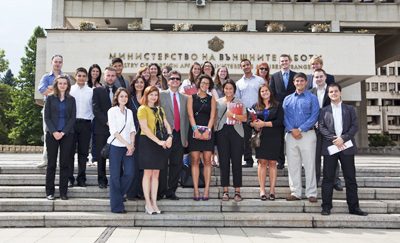
On July 24th, ten students, the academic dean and his family, the ISE photographer, and the Administrative Assistant convened in the Union, grabbed dinner boxes, and boarded a bus to the Sofia airport. A matter of hours later, we arrived in Sofia and took a bus to the US Embassy, where our hosts (diplomats, spouses of diplomats, and other adults associated with the embassy) picked us up and took us to their homes. Most hosts took in one or two participants. In the morning, we reconvened at the embassy for a morning of briefings and a tour of the embassy, a delicious lunch out with young parliamentarians, and then a visit to Parliament (just in time for debates associated with the “no confidence vote” placed that day) and the Ministry of Foreign Affairs. 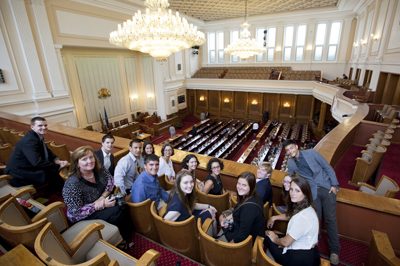
We spent the evening with our hosts (eating out or in, hanging out in a bar or going to bed early, I went out to dinner with my host and twelve people from the embassy, then met her daughters via Skype).
The next day, we said goodbye to our host families and then visited the Archaeological Museum, walked around an active excavation site closed to the general public, and went on a walking tour of downtown Sofia. After another filling lunch together (including a coleslaw-like salad, fried potatoes, and a few types of grilled meat), we said goodbye to our embassy hosts and headed to the airport.
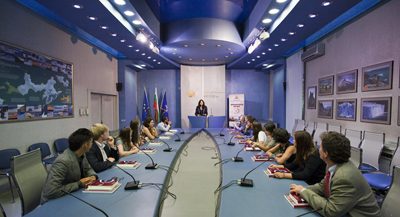 Life as a United States diplomat is utterly different from how I had imagined it. After a morning of briefing by the ambassador (AMB), Deputy Chief of Mission (DCM), someone from the Political Section (POLEC), and a Secret Service agent (USSS), I had a good grasp on the logistics and culture of diplomacy. For example, I learned that an ambassadorship is the peak of a diplomatic career, but extraordinarily difficult to obtain and only three years long. Also, while I had pictured life as a diplomat as living in a country for ten years or so, fostering a deep understanding and love for the country, the fact is that a diplomatic career is a cycle of attending intensive forty-seven week language school in DC, moving to another country for two or three years, then learning another language and moving to a new country (the state department expects six out of eight years in the foreign service to be carried out abroad). I learned that the embassy is swimming in acronyms, that diplomats are able to assimilate as much as they choose to their host culture (the mature ones with families tend to live further out of town and associate more with other Americans), and that the ambassador is not allowed to voice any opinions contrary to the United States’ position (but that he does not have to publicly support it on issues with which he disagrees). “It’s not all cookie-eating and pinstriped suits,” said the cultural attach√© who took us everywhere, telling us of the misimpression that others have of diplomacy. “I purposely did not wear my pinstripes today.”
Life as a United States diplomat is utterly different from how I had imagined it. After a morning of briefing by the ambassador (AMB), Deputy Chief of Mission (DCM), someone from the Political Section (POLEC), and a Secret Service agent (USSS), I had a good grasp on the logistics and culture of diplomacy. For example, I learned that an ambassadorship is the peak of a diplomatic career, but extraordinarily difficult to obtain and only three years long. Also, while I had pictured life as a diplomat as living in a country for ten years or so, fostering a deep understanding and love for the country, the fact is that a diplomatic career is a cycle of attending intensive forty-seven week language school in DC, moving to another country for two or three years, then learning another language and moving to a new country (the state department expects six out of eight years in the foreign service to be carried out abroad). I learned that the embassy is swimming in acronyms, that diplomats are able to assimilate as much as they choose to their host culture (the mature ones with families tend to live further out of town and associate more with other Americans), and that the ambassador is not allowed to voice any opinions contrary to the United States’ position (but that he does not have to publicly support it on issues with which he disagrees). “It’s not all cookie-eating and pinstriped suits,” said the cultural attach√© who took us everywhere, telling us of the misimpression that others have of diplomacy. “I purposely did not wear my pinstripes today.”
My host, who works at the embassy and is married to a diplomat, had emailed me a week before my arrival. She has two little girls, who were back in the US with her husband when I visited. We drove to her embassy-owned house in “the American ghetto” the first night, dodging potholes and loping stray dogs in her large white Toyota. From the house’s location partway up the mountainside, I could see Sofia’s glittering skyline. “Yeah, we like the view,” my host said. We talked about the main issues in Bulgaria as I ate shrimp spaghetti alfredo, made with ingredients from the embassy’s stock of American products. I had fun playing with her two Bulgarian mutts, after a summer without my dog. The next morning, she introduced me to the “embassy dog,” a stray that was a puppy when the embassy was being built and who still hangs around the area. The next evening, we drove to dinner through mud rivers and lightning with a new diplomat and her husband in the backseat. “They redid the cobblestone section a bit ago,” said my host. “The day after they finished, there was a huge storm and all the sand washed away. Now they’re uneven again.” I have to admit that the rain and two thunderstorms while we were in Sofia were a breath of fresh air after a month of Mediterranean heat.
I learned what I had hoped to and more. I am very grateful to the embassy and Semester at Sea for putting together a smoothly run, exciting, enlightening experience.
